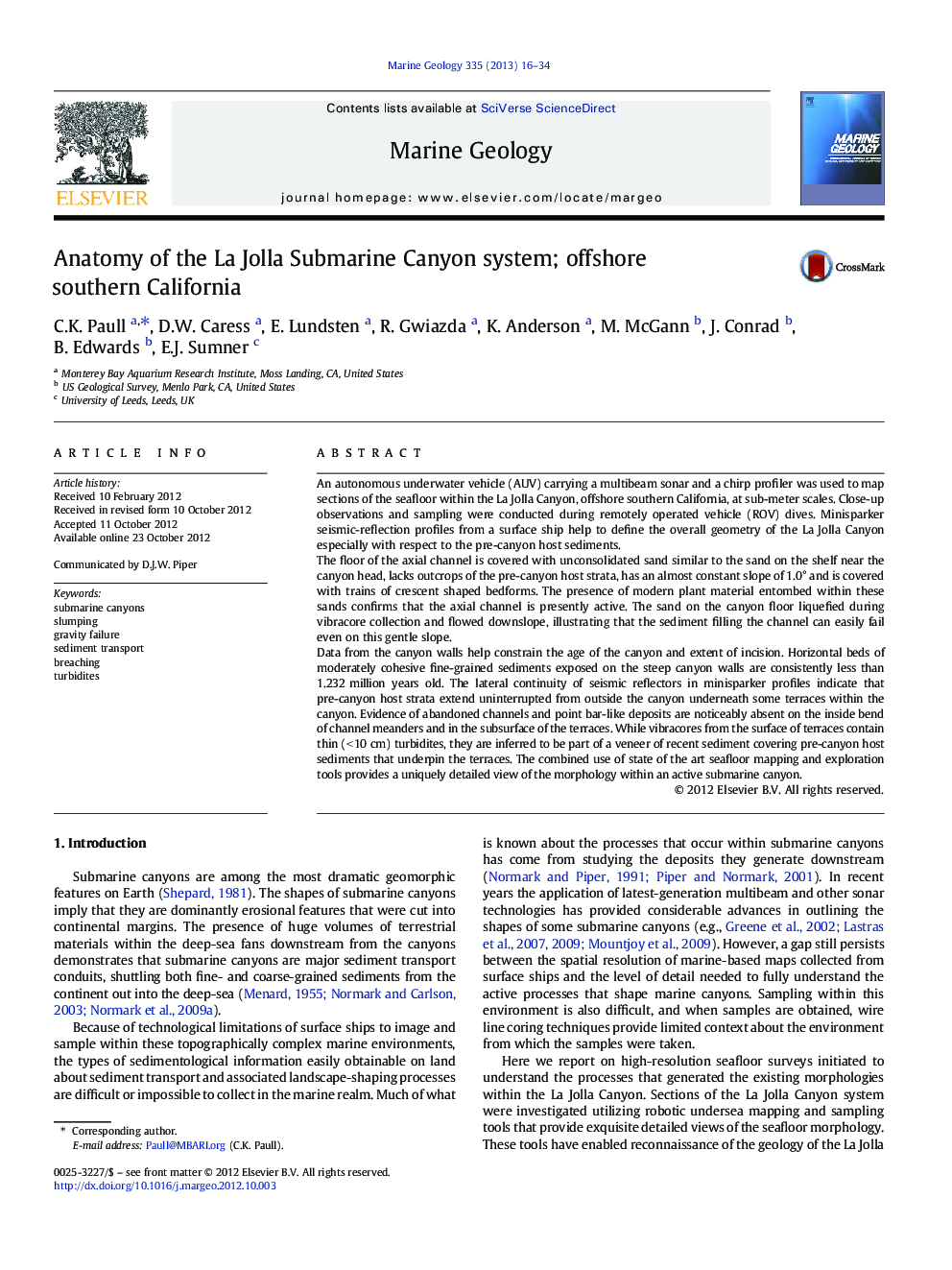| کد مقاله | کد نشریه | سال انتشار | مقاله انگلیسی | نسخه تمام متن |
|---|---|---|---|---|
| 4718499 | 1639117 | 2013 | 19 صفحه PDF | دانلود رایگان |

An autonomous underwater vehicle (AUV) carrying a multibeam sonar and a chirp profiler was used to map sections of the seafloor within the La Jolla Canyon, offshore southern California, at sub-meter scales. Close-up observations and sampling were conducted during remotely operated vehicle (ROV) dives. Minisparker seismic-reflection profiles from a surface ship help to define the overall geometry of the La Jolla Canyon especially with respect to the pre-canyon host sediments.The floor of the axial channel is covered with unconsolidated sand similar to the sand on the shelf near the canyon head, lacks outcrops of the pre-canyon host strata, has an almost constant slope of 1.0° and is covered with trains of crescent shaped bedforms. The presence of modern plant material entombed within these sands confirms that the axial channel is presently active. The sand on the canyon floor liquefied during vibracore collection and flowed downslope, illustrating that the sediment filling the channel can easily fail even on this gentle slope.Data from the canyon walls help constrain the age of the canyon and extent of incision. Horizontal beds of moderately cohesive fine-grained sediments exposed on the steep canyon walls are consistently less than 1.232 million years old. The lateral continuity of seismic reflectors in minisparker profiles indicate that pre-canyon host strata extend uninterrupted from outside the canyon underneath some terraces within the canyon. Evidence of abandoned channels and point bar-like deposits are noticeably absent on the inside bend of channel meanders and in the subsurface of the terraces. While vibracores from the surface of terraces contain thin (< 10 cm) turbidites, they are inferred to be part of a veneer of recent sediment covering pre-canyon host sediments that underpin the terraces. The combined use of state of the art seafloor mapping and exploration tools provides a uniquely detailed view of the morphology within an active submarine canyon.
► AUV mapping surveys and ROV diving reveal the morphology of La Jolla Submarine Canyon.
► Thick sand layers in the canyon's axial channel are easily fluidized.
► On-going sediment failures are contributing to canyon enlargement.
► Pleistocene age pre-canyon host strata underlie terraces on the canyon sides.
► Terrace surfaces on the canyon sides are washed free of slump debris.
Journal: Marine Geology - Volume 335, 1 January 2013, Pages 16–34